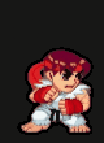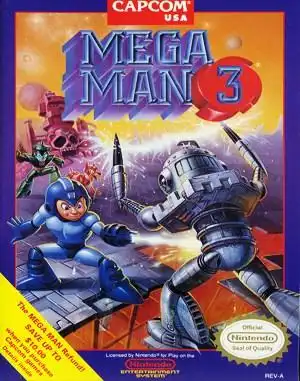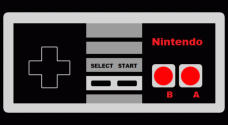Mega Man 3: More Than Just the Middle Child of the NES Era
Remember the days of blowing dust out of cartridges and the satisfying thunk as you inserted a game into your NES? For many of us, those days were filled with the blue bomber, Mega Man. While Mega Man 2 often gets the spotlight (and deservedly so!), there's a strong argument to be made for the brilliance of Mega Man 3. It arrived in 1990, building upon the foundation of its predecessors while introducing features that would become series staples.
This wasn't just another sequel; it felt like a significant evolution. Dr. Wily is back (surprise!), teaming up with the mysterious Dr. Light helper, Gamma. To stop them, Mega Man needs the parts from eight new Robot Masters and the help of a certain loyal robotic canine.
The Game-Changing Additions: Slide and Rush
Mega Man 3 didn't just give us new levels and bosses; it fundamentally changed how Mega Man moved. The introduction of the slide maneuver added a crucial layer of agility, allowing players to zip under projectiles and squeeze through tight gaps. It felt incredibly empowering and opened up new possibilities for level design.
Then there's Rush, Mega Man's robotic dog companion. Forget the item system of Mega Man 2; Rush was a versatile buddy. He could transform into a Coil (for high jumps), a Jet (for flight), and later, a Marine (for underwater travel). Rush wasn't just a tool; he was a character, adding personality and utility that fans quickly adored.
A Rogues' Gallery and Memorable Stages
The eight new Robot Masters in Mega Man 3 are some of the most iconic in the series:
- Magnet Man
- Hard Man
- Top Man
- Shadow Man
- Spark Man
- Snake Man
- Gemini Man
- Needle Man
Each boss had a unique weapon that Mega Man could acquire, and figuring out the boss order to exploit their weaknesses was the classic Mega Man puzzle we all loved. Shadow Man, in particular, was known for being a tough nut to crack!
Beyond the bosses, the level design in Mega Man 3 is often cited as some of the best in the NES era. Stages like Gemini Man's crystal-filled labyrinth or Snake Man's winding pipes were visually distinct and mechanically challenging. They introduced new hazards, mini-bosses (like the recurring Doc Robots, mimicking past bosses!), and secrets that kept you on your toes.
The Soundtrack and Style: Highs and Lows
Composer Yasuaki Fujita delivered another legendary soundtrack for Mega Man 3. Tracks like the Title Screen, Needle Man, and Spark Man are absolute bangers that stick with you long after you've turned off the console. While some might argue it doesn't quite reach the stratospheric heights of Mega Man 2's music, it's still an incredible collection of chiptune anthems.
Graphically, the game looked sharper than its predecessors, with more detailed sprites and backgrounds. However, Mega Man 3 is notorious for technical issues on the original hardware, specifically significant sprite flicker and slowdown when too many objects were on screen. While frustrating at the time, it's almost become part of the game's nostalgic charm for some players today.
Mega Man 3's Place in the Pantheon
Where does Mega Man 3 stand in the pantheon of NES classics? It's undeniably one of the greats. It took the beloved formula, refined it with essential new mechanics (slide, Rush), offered fantastic level design and bosses, and delivered another killer soundtrack.
While Mega Man 2 might be the most accessible and perhaps the most polished feeling on original hardware due to fewer technical hiccups, Mega Man 3 is arguably the more ambitious and feature-rich game. It set the standard for future Mega Man titles and remains a fan favorite, a testament to Capcom's mastery of the 8-bit action-platformer genre.
Revisiting Mega Man 3 today, whether on original hardware, through emulation (like DOSBox for PC versions, though the NES version is king), or on modern collections, is a trip back to a golden age of gaming. It's a challenging, rewarding, and unforgettable adventure that deserves every bit of its legendary status.
FAQ
What is Rush's main purpose in Mega Man 3?
Rush is Mega Man's robotic dog companion who replaces the item system from Mega Man 2. He can transform into different forms (Coil, Jet, Marine) to help Mega Man navigate levels.
What are the main differences between Mega Man 3 and Mega Man 2?
Key differences include the introduction of the slide move, the Rush companion system instead of items, new Robot Masters, longer stages often featuring mini-bosses (Doc Robots), and the first appearance of Proto Man (as Break Man).
Does Mega Man 3 have technical issues?
Yes, Mega Man 3 on the original NES hardware is known for significant sprite flicker and slowdown, particularly when multiple enemies or projectiles are on screen simultaneously.
Is Mega Man 3 considered a good game?
Absolutely! Despite some technical flaws, Mega Man 3 is widely regarded as one of the best entries in the classic Mega Man series, praised for its level design, music, and the crucial additions of the slide and Rush.


